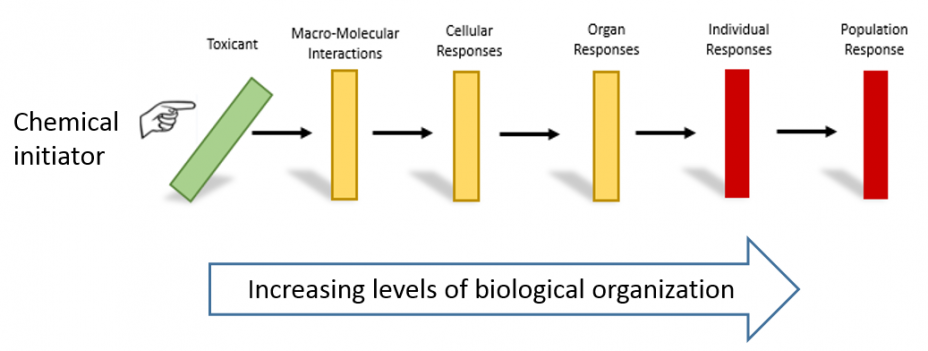Research on Understanding Chemicals' Interactions with Biological Systems
EPA examines complex chemical-biological interactions to predict the potential for chemicals to cause harm in human and ecological communities. This research integrates data from the field and laboratory experiments with computer modeling to understand and predict adverse human and ecological outcomes from chemical exposure. The integration of research methods that look at the whole system is called a ‘systems-based’ approach.
Virtual Tissues and Systems Models
EPA develops models of complex biological systems to study the impact of chemicals on human development. These experimental and computational models are used to help predict what chemical-biological interactions have the potential to lead to developmental toxicity or birth defects.
Adverse Outcome Pathways
Adverse outcome pathways (AOPs) are conceptual frameworks that assemble existing knowledge about biological events that lead to adverse health effects in human populations and ecosystems. These powerful organizational tools use available biological data and information to predict potential effects of chemicals with limited safety data.
Tools
- AOP Knowledge Base - Publicly accessible and searchable web-based resource of AOP information.
- AOP Wiki - Interactive crowd-sourced tool for AOP development
- SeqAPASS - Sequence Alignment to Predict Across Species Susceptibility tool to aid in predicting chemical susceptibility to wildlife, including both plants and animals.
Resources and Publications
 Conceptual Representation of AOPs
Conceptual Representation of AOPs
An AOP is like a series of dominoes, each representing an event at a different level of biological organization. If chemical exposure is severe enough to cause a biological change (domino falling), this can trigger a cascade of events that can result in an adverse health outcome in a whole organism or population. AOPs help us understand the individual dominoes or key events, and the relationship between key events that then result in specific health outcomes.
